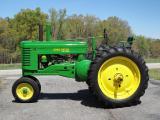- Replies 10
- Views 2.1k
- Created
- Last Reply
Top Posters In This Topic
-
 hd99fxr3 3 posts
hd99fxr3 3 posts -
 AH64ID 2 posts
AH64ID 2 posts -
 gassernomore 1 post
gassernomore 1 post -
 Wild and Free 1 post
Wild and Free 1 post


OK so I understand that high rail pressure means the engine is not under load requiring huge amounts of fuel, add that to rpms, plus mph at any given time equates to xx.x mpg per the algorithem in the ECM.But high did it get 4mpg off? I've been zeroing it out at fill up and it seems to be doing better. I'll be checking it in the next day or so by hand calculation when I fill up. My hand calculations have shown so far that I'm getting just over 18mpg running 75-80mph and a bit over 14 when towing the goose neck 65-70mph, with some local running around thrown in to skew the numbers a bit. But still not bad IMO. But how can the lie-o-meter say I'm getting 18-22mpg when I'm getting 14-18? I've had the truck for 6 weeks and have not done any mods other than add a B&W GN hitch and get the Bed Liner sprayed in.Thoughts